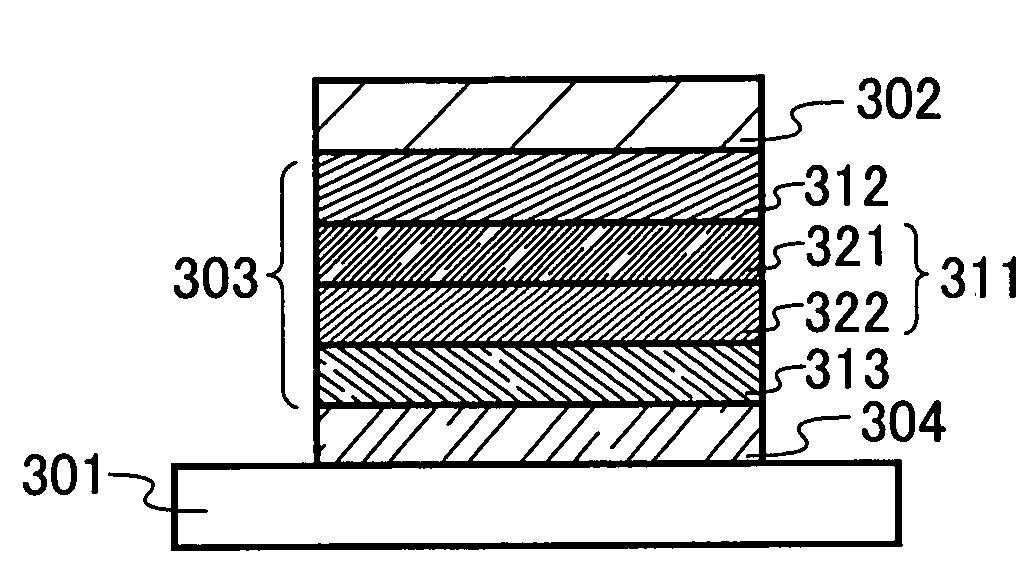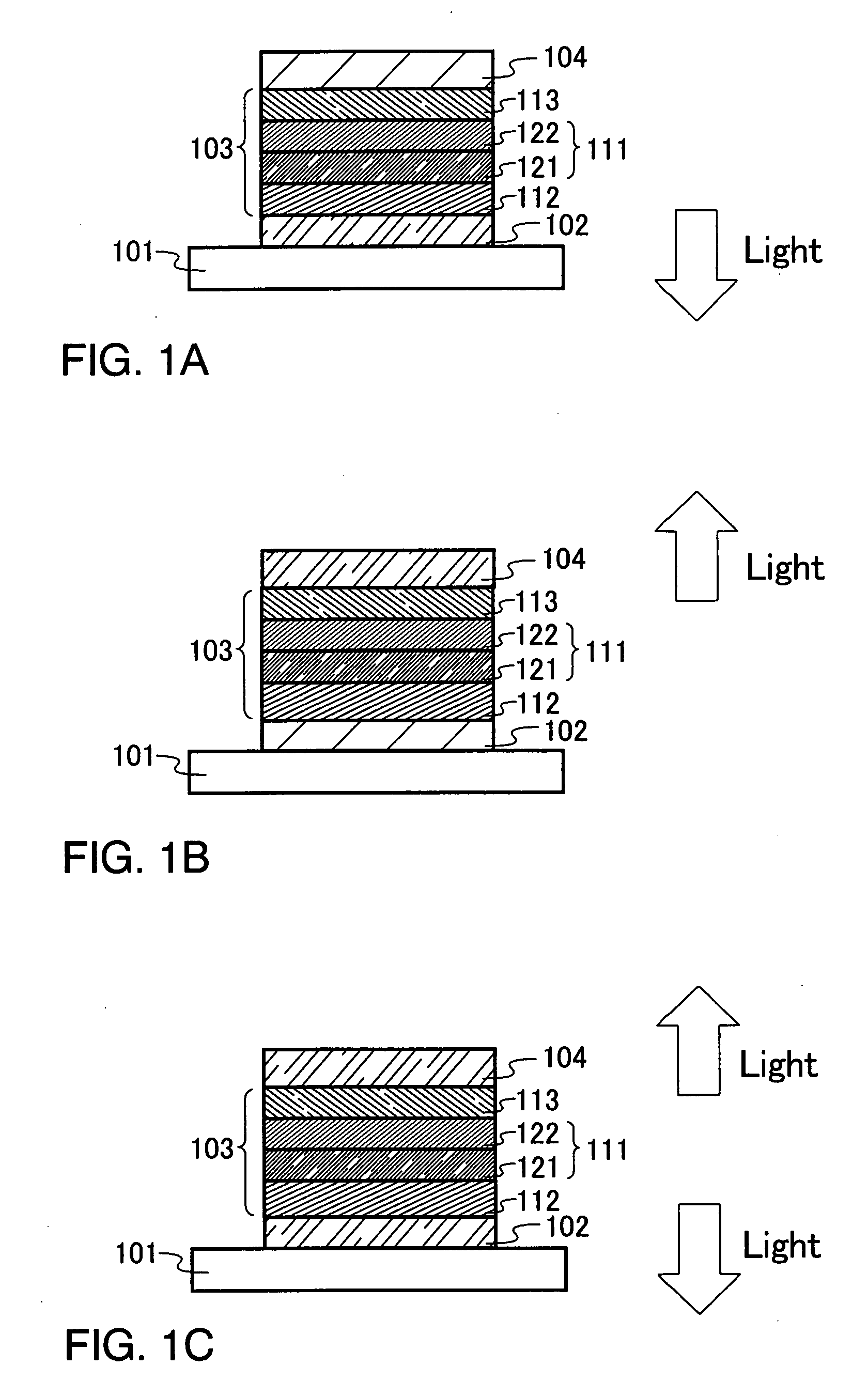Light-emitting element, light-emitting device and an electronic device
a technology of light-emitting elements and electronic devices, which is applied in the direction of thermoelectric device junction materials, semiconductor devices, electrical devices, etc., can solve the problems of difficult to obtain features and short lifetime, and achieve the effect of longer lifetimes
- Summary
- Abstract
- Description
- Claims
- Application Information
AI Technical Summary
Benefits of technology
Problems solved by technology
Method used
Image
Examples
example 1
Measurement Example 1
DPAnth
[0169]In this measurement example 1, the oxidative reaction characteristic and the reductive reaction characteristic of DPAnth were measured by a cyclicvoltammetry (CV) measurement. The scan speed was 0.1 V / sec and 100 cycles of measurement was conducted.
[0170]Firstly, FIG. 16A shows a measurement result of the oxidative reaction characteristic. In the measurement of the oxidative reaction characteristic, the potential of a working electrode with respect to the reference electrode was scanned from −0.05 to 1.20 V, and then from 1.20 V to −0.05 V, which was one cycle.
[0171]As shown in FIG. 16A, the oxidation peak potential Epa remained at 0.93V without changing before (initial state) and after the 100 cycles. In addition, the current amount (oxidation peak current Ipa) in the oxidation peak potential was −11.9 μA in the initial state and −8.49 μA after the 100 cycles. Even after 100 cycles, 71% of that in the initial state was kept. Thus, it can be said tha...
example 2
Measurement Example 2
CzPA
[0176]In Measurement Example 2, the oxidative reaction characteristic and the reductive reaction characteristic of CzPA were measured by a cyclicvoltammetry (CV) measurement. The scan speed was 0.1 V / sec and 100 cycles of measurement was conducted.
[0177]Firstly, FIG. 18A shows a measurement result of the oxidative reaction characteristic. In the measurement of the oxidative reaction characteristic, the potential of the working electrode with respect to the reference electrode was scanned from −0.41 to 1.20 V, and then, from 1.20 V to −0.41 V, which was one cycle.
[0178]As shown in FIG. 18A, the oxidation peak potential Epa remained at 0.87 V without changing before (initial state) and after the 100 cycles. In addition, the current amount (oxidation peak current Ipa) in the oxidation peak potential was −12.5 μA in the initial state and −12.0 μA after the 100 cycles. Even after 100 cycles, 96% of that in the initial state was kept. Thus, it can be said that CzP...
example 3
[0184]Example 3 will specifically describe a light-emitting element of the present invention with reference to FIG. 10. Structural formulas of organic compounds used in this example are shown below.
(Light-Emitting Element 3)
[0185]First, a film of indium tin oxide containing silicon oxide was formed over a glass substrate 2101 by a sputtering method, and thus, a first electrode 2102 was formed. The thickness was 110 nm and the electrode area was 2 mm×2 mm.
[0186]Next, the substrate on which the first electrode 2102 was formed was fixed to a substrate holder that was provided in a vacuum evaporation apparatus, such that the surface on which the first electrode 2102 was formed came to the lower side. After the pressure was reduced to approximately 10−4 Pa, 4,4′-bis[N-(1-naphtyl)-N-phenylamino]biphenyl (abbreviation: NPB) and molybdenum (VI) oxide were co-evaporated on the first electrode 2102 to form a layer 2103 containing a composite material. The thickness was 50 nm, and the weight r...
PUM
 Login to View More
Login to View More Abstract
Description
Claims
Application Information
 Login to View More
Login to View More - R&D
- Intellectual Property
- Life Sciences
- Materials
- Tech Scout
- Unparalleled Data Quality
- Higher Quality Content
- 60% Fewer Hallucinations
Browse by: Latest US Patents, China's latest patents, Technical Efficacy Thesaurus, Application Domain, Technology Topic, Popular Technical Reports.
© 2025 PatSnap. All rights reserved.Legal|Privacy policy|Modern Slavery Act Transparency Statement|Sitemap|About US| Contact US: help@patsnap.com



